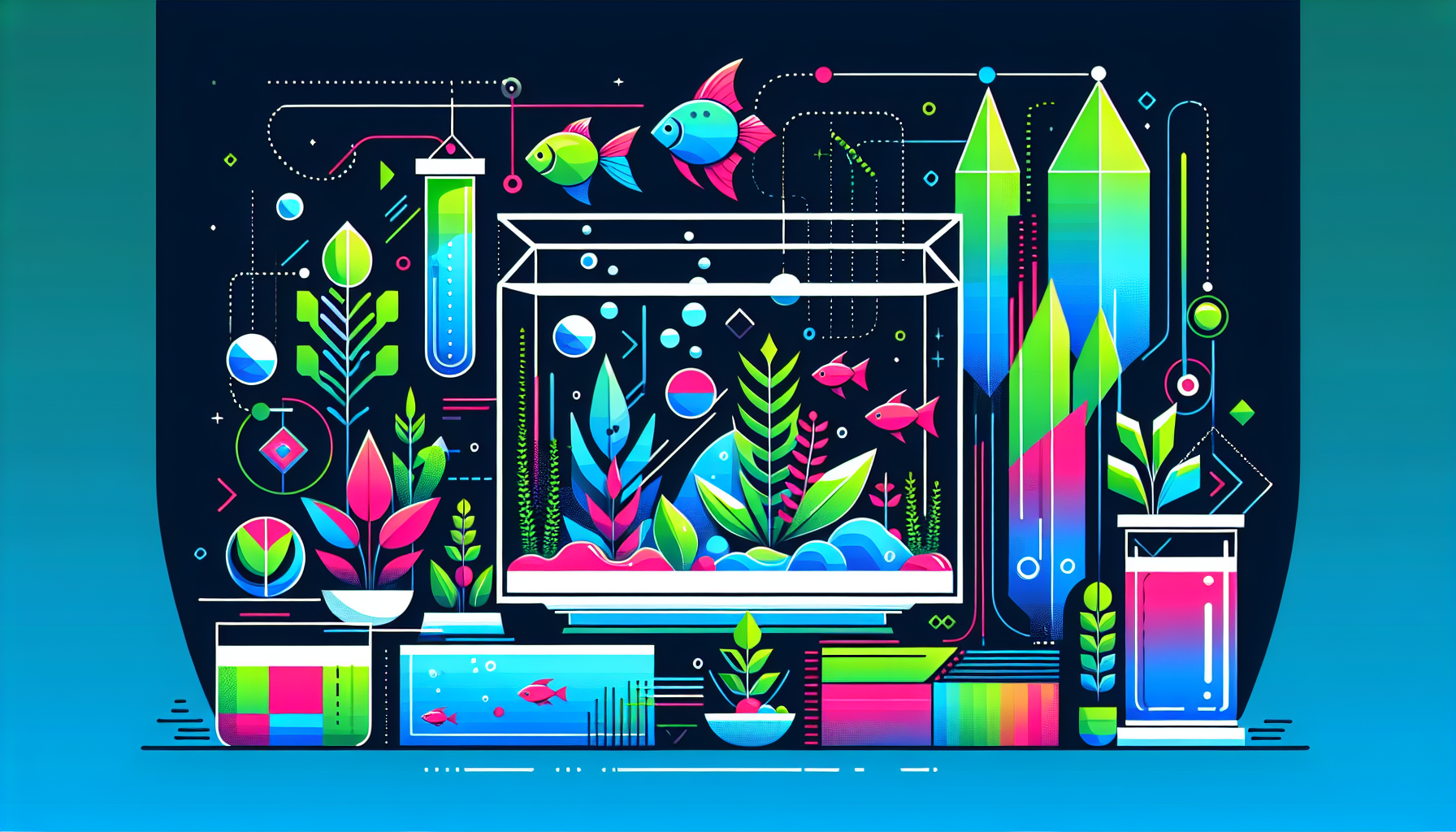Aquascaping For Beginners: Complete Guide for Beginners
Have you ever gazed into a lush, vibrant aquarium and wondered how these underwater gardens are created? Welcome to the world of aquascaping! Whether you’re a hobbyist or just starting out, this comprehensive guide will walk you through every step needed to design your first aquascape. Let’s turn your aquarium dreams into reality!
What is Aquascaping?
Aquascaping is the art of arranging aquatic plants, rocks, stones, driftwood, and substrate in an aesthetically pleasing manner inside an aquarium. Often described as “underwater gardening,” aquascaping combines creativity, design principles, and a passion for aquatic life.
Benefits of Aquascaping
- Creates a natural and calming environment
- Promotes healthy aquatic ecosystems
- Enhances the beauty of your living space
- Provides habitat and shelter for aquarium fish and shrimp
- Develops your creativity and patience
Types of Aquascaping Styles
Before you start, familiarize yourself with popular aquascaping styles to find one that suits your taste and space:
1. Nature Aquarium Style
Inspired by natural landscapes, the nature aquarium style, pioneered by Takashi Amano, mimics forests, mountains, and grasslands. It emphasizes harmony and tranquility using plants, stones, and wood.
2. Iwagumi
This Japanese-inspired style focuses on minimalist beauty using carefully positioned stones as the primary feature. Plant choices are limited for a clean, zen-like appearance.
3. Dutch Style
Characterized by lush, colorful plant arrangements, the Dutch style prioritizes vibrant plant growth, contrasting leaf shapes, and terraced layers. No hardscape (wood/stone) is required.
4. Jungle Style
A wild, thriving look with dense, untamed plant growth, jungle-style aquascapes evoke the essence of natural riverbanks and rainforests.
Essential Equipment for Beginner Aquascaping
Gathering the right aquarium equipment is the first step toward a successful aquascape. Here’s what you’ll need:
- Aquarium Tank: Choose a size (from nano to large) that fits your space and budget.
- Lighting: Full-spectrum LED lights are ideal for plant growth and color rendering.
- Substrate: Nutrient-rich aquasoil or specialized plant substrates help roots develop.
- Filtration: Sponge or canister filters maintain water quality and circulation.
- CO2 System (optional): Boosts plant growth and vibrancy, especially in high-tech setups.
- Heater: For tropical aquariums, a reliable heater keeps your aquascape within the right temperature range.
- Aquascaping Tools: Scissors, tweezers, and spatulas make planting and trimming easier.
Choosing the Right Plants for Beginners
Selecting easy-to-grow aquatic plants is key to early aquascaping success. Here are some plants that thrive with minimal care:
- Anubias – Hardy, can be attached to rocks or wood.
- Java Fern – Tolerates low to medium light, slow growing.
- Cryptocoryne – Various shapes and sizes, great for midground planting.
- Vallisneria – Adds height and movement, ideal for backgrounds.
- Mosses (Java Moss, Christmas Moss) – Versatile, easy to attach, good for shrimp tanks.
For a full list, visit our Aquascaping Plants Guide.
Step-by-Step: How to Set Up Your First Aquascape
1. Plan Your Layout
Sketch your desired scape or browse inspiration from aquascaping galleries. Decide on the style, features, and plant placements.
2. Prepare Your Aquarium
- Rinse the tank, hardscape materials, and substrate with water (no soap).
- Place your aquarium on a level, sturdy surface away from direct sunlight.
3. Add the Substrate
Layer the substrate 3-5 cm deep. Slope from back to front for depth and better viewing angles.
4. Position Hardscape Elements
Arrange rocks, driftwood, and stones according to your layout plan. Use the “golden ratio” or “rule of thirds” for balanced composition.
5. Planting Aquatic Plants
- Use aquascaping tweezers for precision.
- Mist plants with water to prevent drying as you plant.
- Plant foreground and carpeting plants first, followed by midground and background species.
6. Fill the Aquarium
Slowly fill your tank with dechlorinated water to avoid disturbing your layout. Place a plate or plastic bag on the substrate to gently pour water.
7. Install Equipment
Attach your filter, heater, and lighting. Set timers (8-10 hours of light daily for plants) and allow your aquascape to cycle before adding fish or shrimp.
Basic Aquascape Maintenance Tips
- Trim plants regularly for healthy growth and shape.
- Check water parameters (ammonia, nitrite, nitrate, pH) weekly.
- Perform regular water changes (20-30% weekly).
- Remove algae manually or keep algae-eating species.
- Clean your filter as recommended by the manufacturer.
If you encounter plant melt, algae, or other challenges, refer to our Common Aquascaping Problems and Solutions for troubleshooting.
Frequently Asked Questions
Do I need CO2 for my aquascape?
CO2 isn’t essential for beginner-friendly, low-tech aquascapes. Many aquatic plants thrive without added CO2, but growth will be faster and more robust with it.
Can I keep fish in an aquascape?
Absolutely! Once your aquarium is fully cycled, you can add compatible fish species. Check our Best Fish for Aquascaping guide for suggestions.
How long does it take for plants to grow in an aquascape?
Growth rates vary by plant species, lighting, and nutrition. Most plants will show visible growth within a few weeks if conditions are favorable.
Start Your Aquascaping Journey Today!
Creating a beautiful underwater landscape is simpler than you think. With a bit of planning, the right equipment, and easy-to-care-for plants, anyone can enjoy the relaxing art of aquascaping. For more inspiration and tutorials, explore our Aquascaping Tutorials section.
Ready to get started? Share your progress, ask questions, and join our community at Aquascaping Academy. Dive into the world of aquascaping today!



